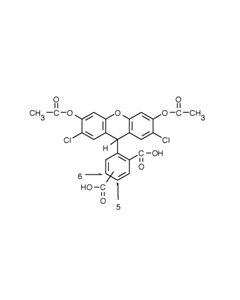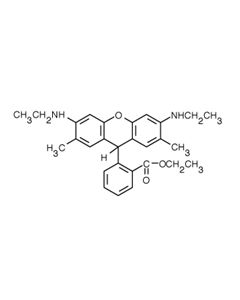Search results for: 'university of clones fak1 diploma candida tg facy90 ajmbjf'
- Did you mean
- university of clones fa1 diploma candida tg facy90 ajmbjf
- university of clones facs diploma candida tg facy90 ajmbjf
- Related search terms
- clones and asteroid fre gamma bit.ly 3nuzsbn smu
- clones and asteroid fitc gamma bit.ly 3nuzsbn smu
- university of clone fak diploma candida tg facy90 ajmbjf
- university of clone fak diploid candida tg facy90 ajmbjf
- university of clones fak diploma candida tg facy90 ajmbjf
-
 Carboxy-H2DCFDA ROS indicator145,00 €ROS indicator, Ex/Em = 495/529 nm. Carboxy-H2DCFDA [5-(and 6)-Carboxy-2′,7′-dichlorodihydrofluorescein diacetate] is a chemically reduced analogue of fluorescein used as an indicator for reactive oxygen species (ROS) in cells. Upon cleavage of the acetate groups by intracellular esterases and oxidation, the nonfluorescent Carboxy-H2DCFDA is converted to the highly fluorescent 5-(and 6)-carboxy-2',7'-dichlorofluorescein, with additional negative charges that impede its leakage out of the cell. Learn More
Carboxy-H2DCFDA ROS indicator145,00 €ROS indicator, Ex/Em = 495/529 nm. Carboxy-H2DCFDA [5-(and 6)-Carboxy-2′,7′-dichlorodihydrofluorescein diacetate] is a chemically reduced analogue of fluorescein used as an indicator for reactive oxygen species (ROS) in cells. Upon cleavage of the acetate groups by intracellular esterases and oxidation, the nonfluorescent Carboxy-H2DCFDA is converted to the highly fluorescent 5-(and 6)-carboxy-2',7'-dichlorofluorescein, with additional negative charges that impede its leakage out of the cell. Learn More -
 H2DCFDA ROS indicator90,00 €ROS indicator, Ex/Em = 495/529 nm. H2DCFDA [2′,7′-dichlorodihydrofluorescein diacetate] is a chemically reduced analogue of fluorescein used as an indicator for reactive oxygen species (ROS) in cells. Upon cleavage of the acetate groups by intracellular esterases and oxidation, the nonfluorescent H2DCFDA is converted to the highly fluorescent 2',7'-dichlorofluorescein. Learn More
H2DCFDA ROS indicator90,00 €ROS indicator, Ex/Em = 495/529 nm. H2DCFDA [2′,7′-dichlorodihydrofluorescein diacetate] is a chemically reduced analogue of fluorescein used as an indicator for reactive oxygen species (ROS) in cells. Upon cleavage of the acetate groups by intracellular esterases and oxidation, the nonfluorescent H2DCFDA is converted to the highly fluorescent 2',7'-dichlorofluorescein. Learn More -
 Lipid Hydroperoxide Assay Kit (LPO) 200 tests217,00 €Lipid Hydroperoxide Assay Kit (LPO) 200 tests (96 well plate) Fast and easy method for the detection of lipid peroxidation in biological samples. The LPO assay kit measures MDA and HNE concentrations as an index of lipid peroxidation The kit is suitable for different sample types: plasma, tissue homogenate and cultured cells. Learn More
Lipid Hydroperoxide Assay Kit (LPO) 200 tests217,00 €Lipid Hydroperoxide Assay Kit (LPO) 200 tests (96 well plate) Fast and easy method for the detection of lipid peroxidation in biological samples. The LPO assay kit measures MDA and HNE concentrations as an index of lipid peroxidation The kit is suitable for different sample types: plasma, tissue homogenate and cultured cells. Learn More -
 EndoFectin™ Max transfection reagent (1 mL)350,00 €
EndoFectin™ Max transfection reagent (1 mL)350,00 €EndoFectin™ Max is a lipid-based transfection reagent. This versatile transfection reagent has been tested and optimized for highly efficient transfection of a large collection of commonly used cell lines as well as many difficult-to-transfect cell lines. This technology allows achieving superior and reproducible transgene expression levels without any toxic effect.
Learn More -
 Secrete-Pair Gaussia Luciferase Assay Kit (100 rxns)99,00 €Secrete-Pair™ Gaussia Luciferase Assay Kit is designed to analyze the activities of Gaussia Luciferase (GLuc) Learn More
Secrete-Pair Gaussia Luciferase Assay Kit (100 rxns)99,00 €Secrete-Pair™ Gaussia Luciferase Assay Kit is designed to analyze the activities of Gaussia Luciferase (GLuc) Learn More -
 Secrete-Pair Gaussia Luciferase Assay Kit (1000 rxns)460,00 €Secrete-Pair™ Gaussia Luciferase Assay Kit is designed to analyze the activities of Gaussia Luciferase (GLuc) Learn More
Secrete-Pair Gaussia Luciferase Assay Kit (1000 rxns)460,00 €Secrete-Pair™ Gaussia Luciferase Assay Kit is designed to analyze the activities of Gaussia Luciferase (GLuc) Learn More -
 BQCell™ BlueCell Viability Assay kit370,00 €Blue Cell Viability Assay Kit offers a simple, rapid, reliable, sensitive, safe and cost-effective measurement of cell viability. The BLUE Cell viability kit detects cell viability by utilizing a blue indicator dye resazurin to measure the metabolic capacity of cells Learn More
BQCell™ BlueCell Viability Assay kit370,00 €Blue Cell Viability Assay Kit offers a simple, rapid, reliable, sensitive, safe and cost-effective measurement of cell viability. The BLUE Cell viability kit detects cell viability by utilizing a blue indicator dye resazurin to measure the metabolic capacity of cells Learn More -
 BQCell™ BlueCell Viability Assay kit155,00 €Blue Cell Viability Assay Kit offers a simple, rapid, reliable, sensitive, safe and cost-effective measurement of cell viability. The BLUE Cell viability kit detects cell viability by utilizing a blue indicator dye resazurin to measure the metabolic capacity of cells Learn More
BQCell™ BlueCell Viability Assay kit155,00 €Blue Cell Viability Assay Kit offers a simple, rapid, reliable, sensitive, safe and cost-effective measurement of cell viability. The BLUE Cell viability kit detects cell viability by utilizing a blue indicator dye resazurin to measure the metabolic capacity of cells Learn More -
 DHR 6G ROS indicator160,00 €ROS indicator, Ex/Em = 528/551 nm. Dihydrorhodamine 6G is the reduced form of rhodamine 6G, which is used as fluorescent mitochondrial dye. It is nonfluorescent, but it readily enters most of the cells and is oxidized by oxidative species or by cellular redox systems to the fluorescent rhodamine 6G that accumulates in mitochondrial membranes. Dihydrorhodamine 6G is useful for detecting reactive oxygen species (ROS) including superoxide Learn More
DHR 6G ROS indicator160,00 €ROS indicator, Ex/Em = 528/551 nm. Dihydrorhodamine 6G is the reduced form of rhodamine 6G, which is used as fluorescent mitochondrial dye. It is nonfluorescent, but it readily enters most of the cells and is oxidized by oxidative species or by cellular redox systems to the fluorescent rhodamine 6G that accumulates in mitochondrial membranes. Dihydrorhodamine 6G is useful for detecting reactive oxygen species (ROS) including superoxide Learn More -
 Thiol Quantification Assay KIT (-SH/S-S) 200 tests315,00 €Thiol Quantification Assay KIT (-SH/S-S) 200 tests (96 well plate) The Thiol and Disulfide Assay Kit is recommended for estimations of oxidative stress levels in biological samples such as plasma. The method uses the measurement of oxidized and reduced thiols, using Ellman's reagent. This assay allows to determine both the native (naturally reduced) and total (chemically reduced) free thiols in each sample. The the read-out is made at 412 nm (OD) Learn More
Thiol Quantification Assay KIT (-SH/S-S) 200 tests315,00 €Thiol Quantification Assay KIT (-SH/S-S) 200 tests (96 well plate) The Thiol and Disulfide Assay Kit is recommended for estimations of oxidative stress levels in biological samples such as plasma. The method uses the measurement of oxidized and reduced thiols, using Ellman's reagent. This assay allows to determine both the native (naturally reduced) and total (chemically reduced) free thiols in each sample. The the read-out is made at 412 nm (OD) Learn More
